In the Studio: Jon Hopkins
We weren’t exaggerating in the least bit when we reviewed Jon Hopkins‘ XLR8R Pick’d Immunity […]
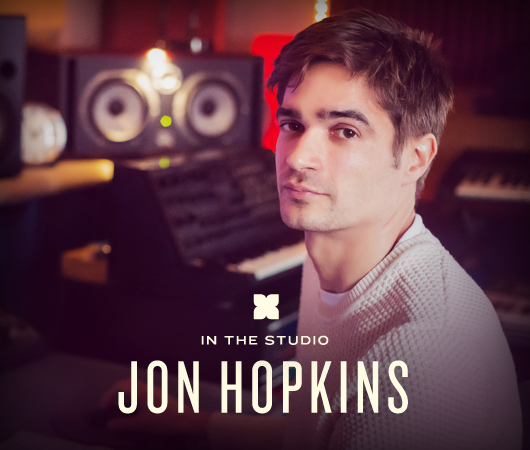
We weren’t exaggerating in the least bit when we reviewed Jon Hopkins‘ XLR8R Pick’d Immunity album and said that the UK artist is “from a school of production that values craftsmanship over most everything else.” The fact is emblazoned across Immunity‘s eight hyper-detailed tracks, as each handcrafted layer of sound design and momentary nuance is as important to the music’s staying power as its equally well-crafted beats and melodies. Ever since we heard the new LP, we’ve been absolutely curious to find out what kind of machines, software, and production work Hopkins put into his new album during the four years since he released the similarly excellent Insides, so we tracked him down at his studio in Hackney, East London to peek around a bit. We also talked with the talented producer about his love for vintage software, his favorite studio tricks, his connections with Brian Eno, his aversion to the more technical aspects of music production, and why he’ll never record over 16-bit, among other illuminating topics.
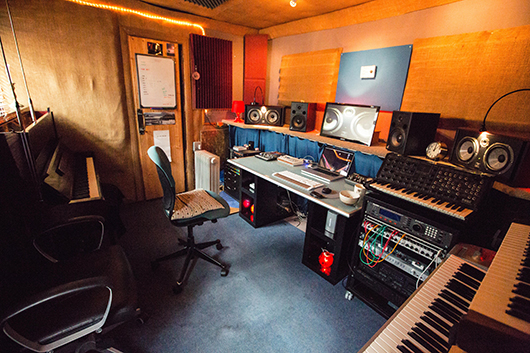
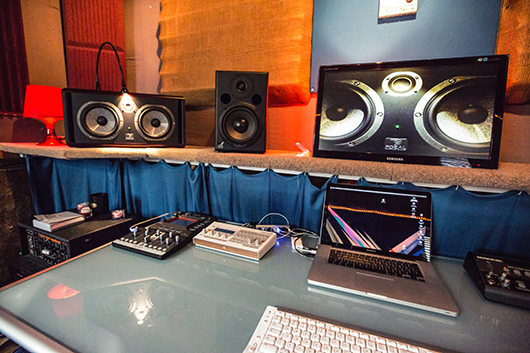
XLR8R: Just to start off, give us a basic rundown of the major units in your studio.
Jon Hopkins: Yeah, so Logic is the main system that I use, but I also have Parallels on my Macbook Pro to run my old PC. I’d been running the same PC for like 10 years.
What version?
Windows 98. [Parallels] is incredible because I can have the exact same PC that I’ve gotten so used to running in one window on my Mac. I wrote my last two records on the real thing, and now I’ve just compressed it into the Mac.
Which Windows programs are you using?
It’s just SoundForge. Maybe I’m just stubborn about learning new things—I can’t stand learning new programs—but any sound I can imagine, I can make with SoundForge. And I’m using the old version, like 4.5 from 1999. I use it for every sound.
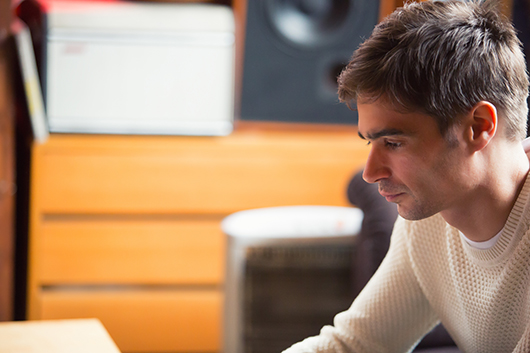
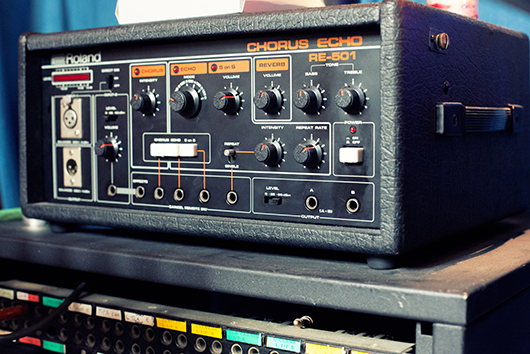
Every sound on the record?
Pretty much. The live instruments get recorded into Logic, and then I open them simultaneously in SoundForge. I can make changes to them in [SoundForge], and those changes update immediately [in Logic] without having to save them. It’s kind of like a loophole. Logic doesn’t know that the sounds are being changed, so it just plays them directly off the drive. I’m just so used to it. I can have an infinite number of changes on a sound, with a whole Undo chain just for sound [in SoundForge] and a whole Undo chain just for arrangement changes [in Logic]. It keeps the sound and the arrangement completely separate, and I don’t understand why there aren’t programs that already do that. To me, the two things are different. They shouldn’t be part of the same chain.
How much live recording did you do for Immunity other than the piano?
On this record, there are a little bit of vocals, but they’re heavily disguised. And then there are some violins, as well. Again, you wouldn’t know from the sound. At the end of the first track, “We Disappear,” there’s a kind of weird sound going up and down the harmonic scale, and that’s a violin bow going up and down a string.
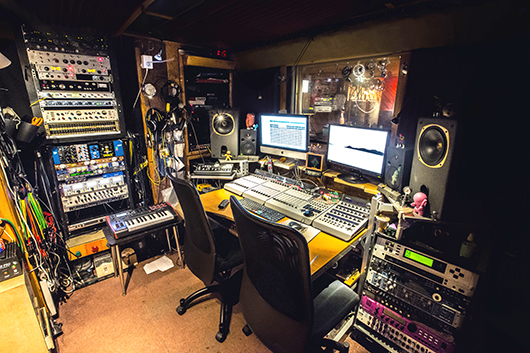
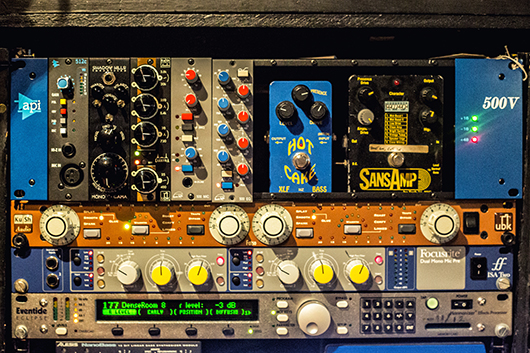
Do you do all of the live recording in your personal studio?
That’s the great thing about my studio—there’s a commercial studio downstairs. So if I need to do serious live recording, like drums or anything (there are a tiny bit of drums on the album), then I go downstairs. That’s where the huge rack of pre-amps and compressors and stuff is, but part of the arrangement I have there is that I have access to all of that stuff. It’s all used on the record, but it’s not the feature.
The other great thing about being in that studio is that there are two engineers there who are kind of experts. I’m not an expert at capturing acoustic sound, so I had my mics set up on the piano by those guys. They kind of hung them from the ceiling, gave me advice on mic types and pre-amps. There’s a section in that song “We Disappear” that sounds like a choir in the background, and that’s my two string players and me all singing around one mic, which I then overlayed like 15 times. On the track “Collider,” the bass drum of the beat was made from a [recording of a] tuned tom drum that was slowed down quite a lot. That room has a really good sound, so I try to capture things in there. Sometimes we re-amp things, which is good for drums, and run things through a speaker to get a good crunch.
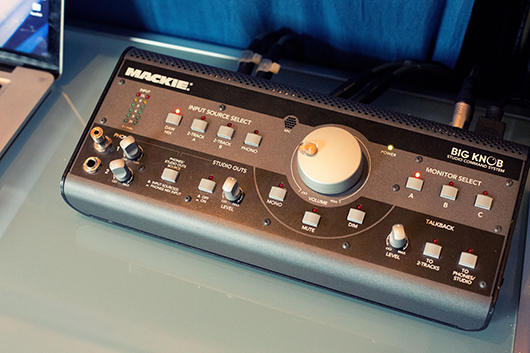
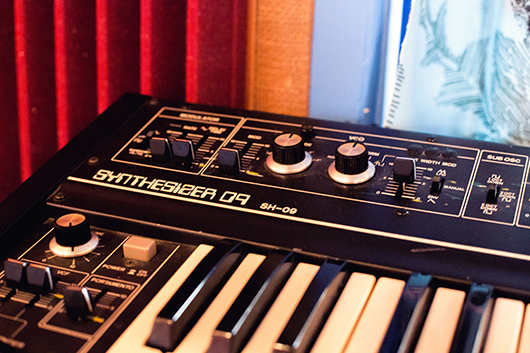
Who else uses that space?
The downstairs room is just available for anyone to book, so there’s an endless stream of people. I mean, Brian Eno has been down there. The drums for the record he did with David Byrne were recorded down there. The band PVT comes in occasionally still. It’s been a studio for like 30 years now.
And how long have you been using it?
For six years.
And it’s outside your house in East London?
Yeah. For me, that’s absolutely crucial. Previously, I had [my studio] on the top floor of the house I was living in, and I just didn’t have that work/life separation. I’d get up in the morning and head upstairs to listen back to what I did [the day before], and before I knew it, it’s 4 p.m., I haven’t eaten, still in my dressing gown… Not behaving like a normal person who goes to work. [laughs] I have to get up in the morning, have breakfast, properly get dressed, and go into work. I prefer a long day of starting in the morning over working late into the night.
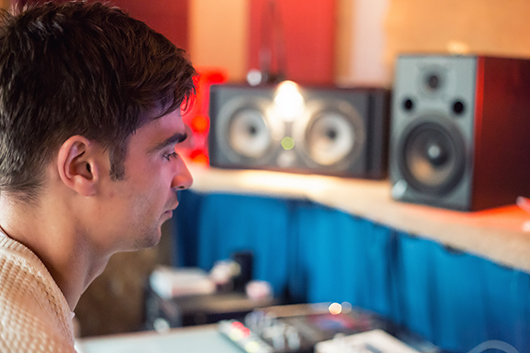
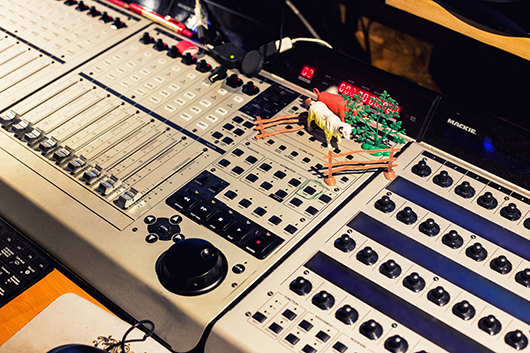
Do you put in like a sort of “9 to 5 shift” in the studio?
At the first stages of recording, I do that. But when I get to the end and have got, like, mastering coming up, everything goes out the window. No friends, no food, nothing.
Do you dabble with mastering at all?
No. I always go and I get stuck in, but I don’t really know anything about it. I know how it should sound. I always use the same guy, Guy Davie. He’s amazing. He’s done my last three or four records.
How much do you rely on your MS-20?
The MS-20 is all over this album. The lead single, “Open Eye Signal,” is only that, basically. There’s a choir sound in the background, which is me singing with loads of weird processing, but it’s basically just made out of one sound. With a synth like that, the sound can evolve so smoothly and gradually. I did just loads and loads of live takes of me fiddling around with that synth, starting with one sound and never cutting to another sound. That’s what I wanted to do with that track, so it was a really singular, simple kind of thing. And that was the track that kicked off the writing of the album. It was the first one I wrote, properly, and made me realize the direction the album was going. The title track, “Immunity,” existed in an earlier form, but I kind of completely changed it.
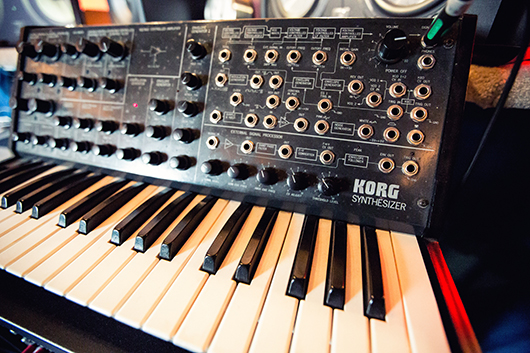
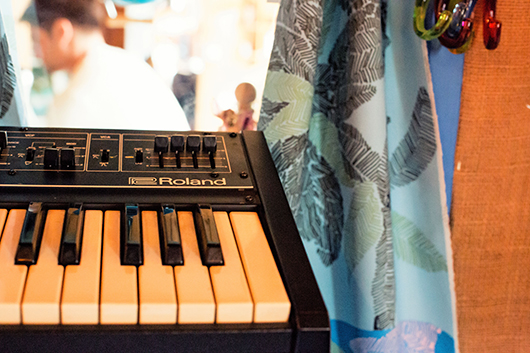
Where else did you use the MS-20?
Almost all of the bass is from that, and any time you hear a techno-y riff of any sort, it’s that. I use a Korg Trinity—which was the only synth on Insides and my previous albums—a lot. I also had an SH-09 on loan. I used it a little bit for the bass, but the MS-20 is the lead synth.
Do you use the Eventide much at all?
I used it so much on my previous record, and I did a little bit on this one. But I found that I could basically make plug-in chains in Logic that I prefer.
Which effects do you like better?
There’s one on the track “Abandon Window” where you kind of hear the piano dissolve into the distance, and that’s basically this sort of pitch shifters into reverbs model. There’s a sound on the Eventide called Angel Echoes, and I had a tweaked version that I was using a lot. It pitch shifts an octave up with a little bit of feedback that’s another octave up, which goes into a chorus and a long reverb. It’s quite a recognizably Eno-type sound, and that was another reason why I wanted to move away from the Eventide. It was his instrument, like the DSP4000. It’s what all the amazing sounds on the early U2 records and the stranger sounds on the Apollo ambient album were made with. I was already using it on Insides a lot, and I just thought it was time to move on a bit. It’s not on this new record as much, but there are little bits. The chain I made in Logic sounds more modern to me, and that’s just using pitch shifters into Echoboy and then Altiverb with some other sidechains and weird things going on. It’s used a lot on the record.
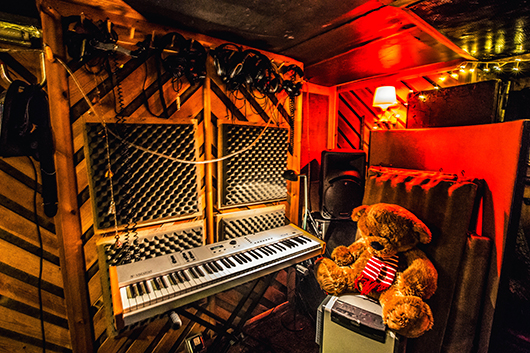
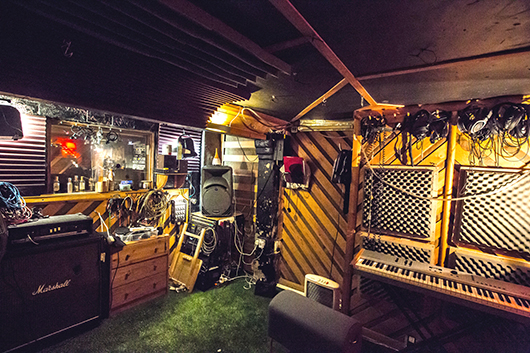
“Modern” is definitely a word which comes to mind throughout Immunity, and there’s really not much else that sounds like the record. Was there a certain batch of plug-ins or specific processes you used to achieve that sound?
It’s that combination of using SoundForge for the sheer detail of editing and rhythmic stuff you can get into there, coupled with the amazing plug-in quality you get in Logic. Some of my favorite plug-ins, like Altiverb, can be used for so many things because you’ve got all these models of spring reverbs and such in there. You put that on a sound, bounce it, slow it down, and you get these incredible harmonics. I’ve found a lot of weird sounds through processes like that. These really beautiful melodic accidents that I try to capture. The PuigTec EQs from one of the Waves bundles I’ve got bring this amazing richness to the music. SoundForge itself is very digital and very old, but if you use it to do the more obviously manipulated sounds and then put it through Logic plugins, you get this amazing combination of modernness and fuzzy warmth. There’s also the Decapitator, which is like a tape saturation. So you can have all sorts of crazy stuff playing in SoundForge, but the Decapitator makes it sound a little more physical. Another saturator I have is an old one from 1999 called Magneto. It just has this amazing effect on everything, it just takes the perfection and the shine off. It makes everything a little more dirty, a little more attractive to listen to, I think.
Are you still using this old software because you find there’s nothing new out there that compares?
Yeah, for me. I’m sure people would argue with that, but I’m used to them and know how to use them better than something new. I guess I get addicted to a certain sound. When I know I want Magneto on something, I can fiddle around with any other modern plug-in, but it just won’t give me that sound. And if that’s the sound I want, there’s no point in wasting my time [on anything else]. And it’s all over the record, it’s part of its character. I’m pretty sure there aren’t going to be many other people who are bothering to use it. I mean, my PC died. The physical version of the PC that lives inside of my Mac died a long time ago.
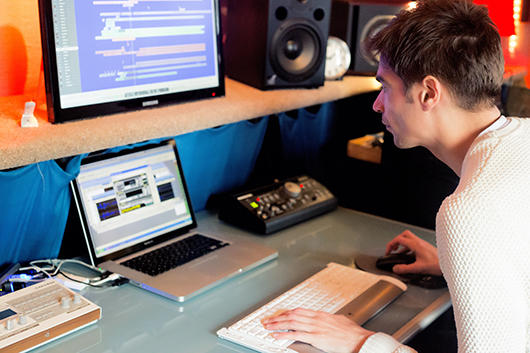
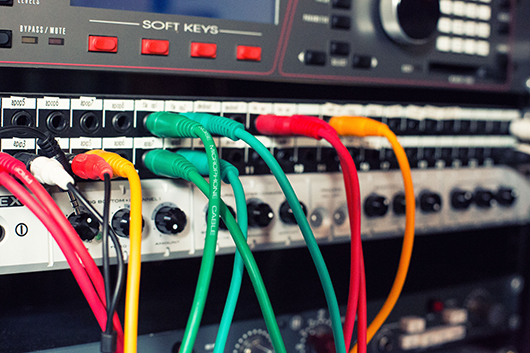
What’s your mixdown process like?
I’ve got this Aphex Aural Exciter and a Heritage audio pre-amp, but it’s basically all done in the box. I work really hard to make sure that [my mixdowns] don’t sound too much like [they ‘re done in the box], but I find that if you keep using real sources for everything—you use a real synth, a real piano, real strings, real percussion, and you’re making those noises yourself—then it still has that physical sound. The second you go into one of those virtual instruments, then it’ll sound “in the box.”
Another key thing for me, which is maybe a bit controversial, is that I never record above 16-bit. Everything I’ve ever done is 16-bit and 44.1 khz, I never go higher.
Really? Why is that?
Firstly, I just don’t care. I don’t think [anything higher] makes it sound better. I think it makes it sound higher quality, shinier, and more accurate, but in my opinion, it sounds less emotional. Sometimes I hear records that are being recorded at the absolute highest quality, and I just don’t like the sound of it. I mean, for some things it’s right, but maybe one in a hundred thousand people will notice. I’m hoping to start dabbling with surround sound, so I’m up for that form of expansion, but with sample rate, I just don’t like the sound as much. Simple as that.
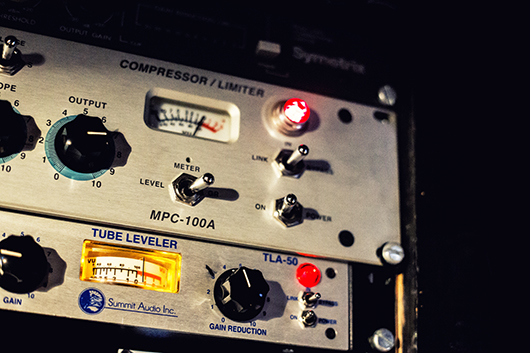
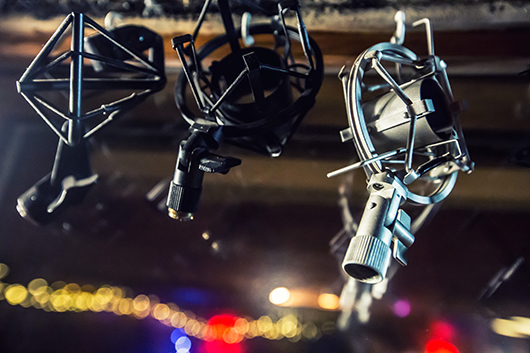
Would you say you’re a less technical producer than most?
I go pretty deep into editing and programming within the system of SoundForge and Logic, but everything else around that doesn’t feel like music to me. Setting up a new Mac or setting up a virtual PC or choosing microphones doesn’t feel like music. My brain is incredibly focused and stubborn and ignorant, and likes to remain ignorant of those kinds of things. If I was just doing solo music and not film scores and stuff like that, I wouldn’t need an assistant who’s really on the ball with all the technical stuff.
What about working with synth patches and tweaking effects, does that feel like music to you?
Oh, yeah, that is music for me. I have to be hearing something immediately to get excited enough to do it. All the musical processes I do myself, and the effects are my favorite, to be honest. I love to play a part, start manipulating it until it’s something else entirely, and then mix the original part back in. It makes this sound that has kind of a ghost of itself in the background somewhere. And I love to get really detailed with the beats, that’s my favorite. I’ve been recording stuff for 12 years now, and in that time, I’ve gotten used to what works for me. For me, the most important thing is to keep everything moving very fast, so when I have an idea, I can realize it and make it audible as soon as possible. If you have one of those amazing days where you hit a massive riff, it’s the best feeling in the world. Nothing can touch you when you’re in that mood, you’re just so ecstatic.

